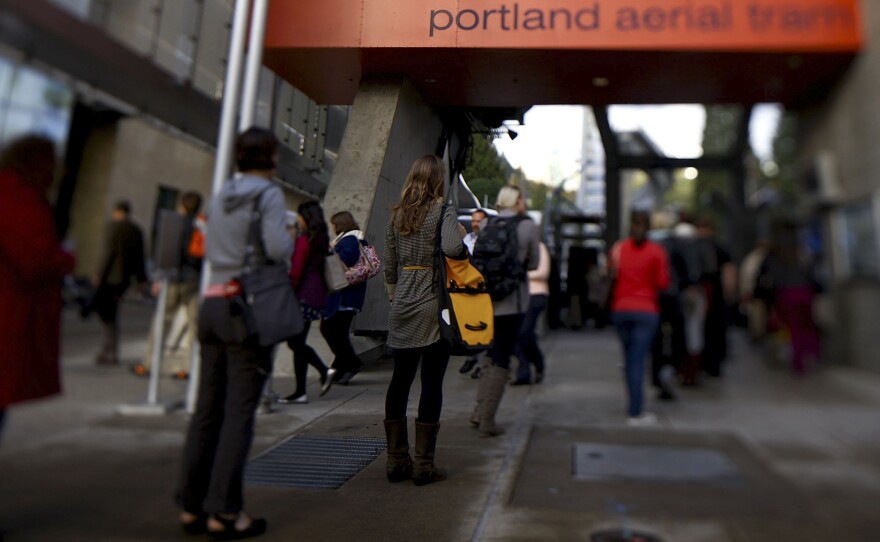


Imagine a hospital on top of a mountain. How would doctors and patients get in and out? In Portland, Ore., commuters don't have to drive up a twisty, two-lane road to get there. Instead, they glide up 500 feet in the air in a gleaming silver gondola.
Portland's aerial tram connects the south waterfront down near the river to the Oregon Health and Science University on top of Marquam Hill.
For nurse Sara Hone, it has changed her commute. "I love it. I can't imagine a time without it," she says.
On a bad day, the trek up the windy hill could take up to 45 minutes. Now it's a 3,300-feet, three-minute sky tram ride with beautiful views of the city.
"OHSU, through somewhat an accident of history, wound up being built on Marquam Hill, which is essentially the top of a mountain," says Mark Williams, vice president of campus development.
In 1880, a railroad company bought the land for a depot without looking at it first; then, realizing it would be too difficult to use, later donated it to OHSU. The hospital started small 125 years ago but has now grown to be a huge enterprise. It's the only academic medical center in Oregon and the largest employer in Portland.
"We have slowly but surely occupied this entire mountaintop. We are essentially landlocked and capped. We can't build anything new to meet any new demand until we knock something else down," Williams says.
And there's no place to park. But down at the bottom of the hill, just on the other side of Interstate 5, is a big swath of flat land perfect for parking and for the medical center's expansion. All that was needed was a quick way to get people up and down.
"We can't function having a brain surgeon spend 45 minutes in traffic and call that a viable campus to get from one place to another," Williams says.
They considered a streetcar, a dedicated express bus lane, even a tunnel, but Williams says by far the best option was the sky tram, which opened in 2007. It's linked to the city and surrounding suburbs by an extensive public transportation system. The city streetcar stops just feet from the tram so commuters have several ways to get here. They can drive and park, take the light rail to the streetcar, walk or bike.
And for cyclists, there's free valet parking, run by Kiel Johnson. The service is popular. Neuroscience student Nora Hammock is one of his customers.
"It's the best. It's so lovely to be able to ride up and drop my bike off," Hammock says. "It's safe and dry the whole time, and I get to ride to work in one of the most unique transportation systems."
And for patients -- and anyone who works on the hill -- the sky tram ride is free.
Copyright 2013 NPR. To see more, visit www.npr.org.






